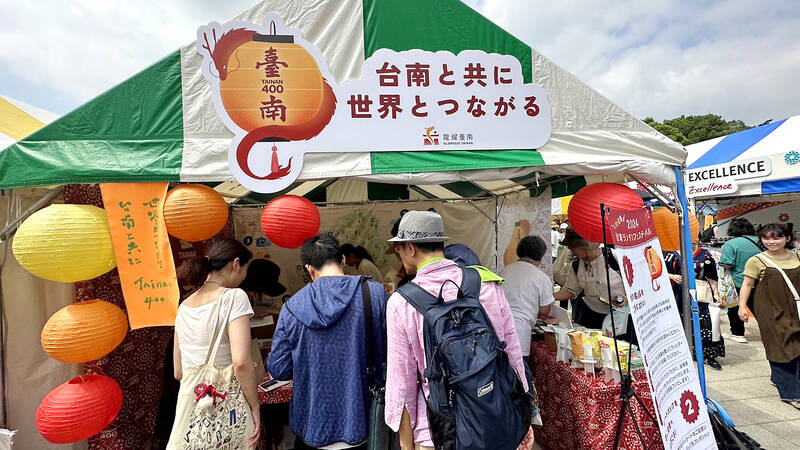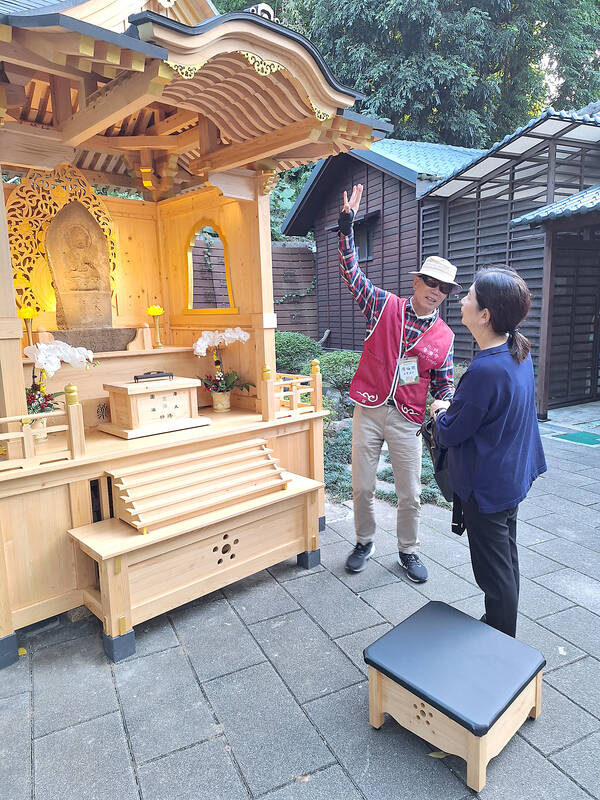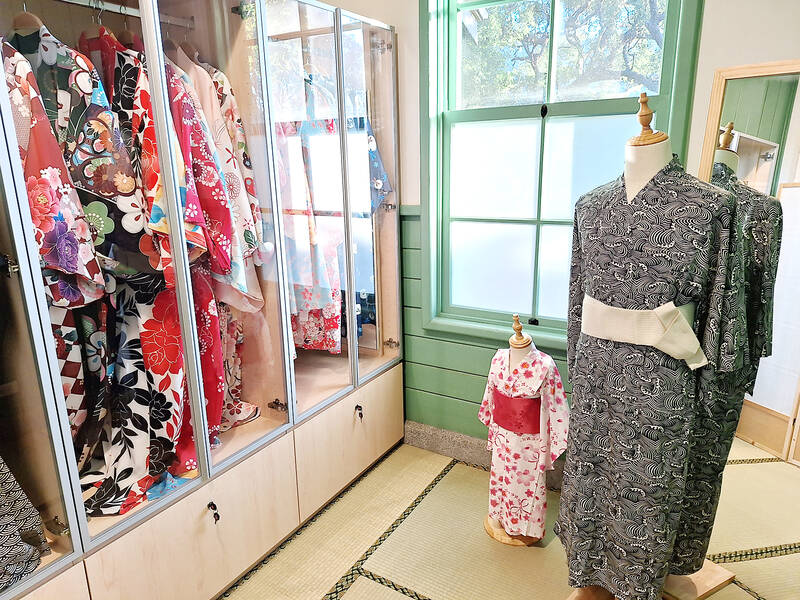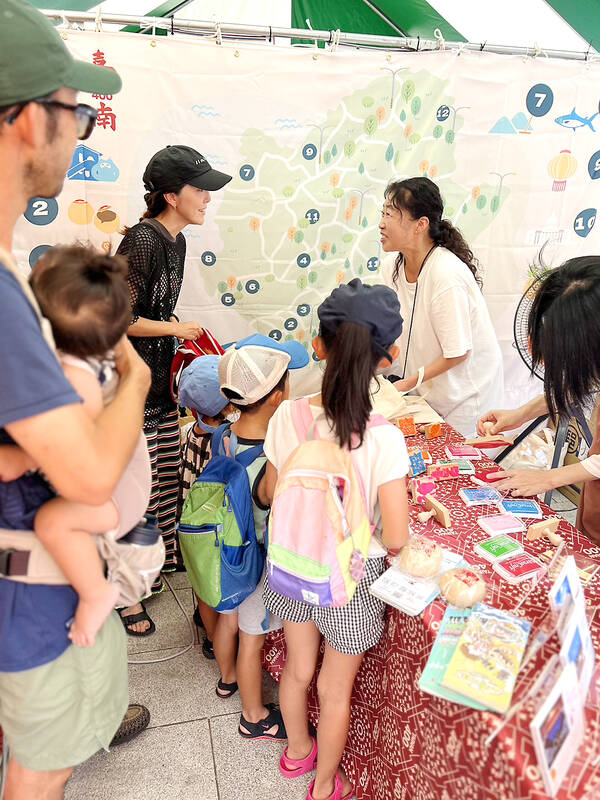Taiwan’s tourism authorities have expended great energy and resources to promote Taiwan to Japanese audiences.
From Sept. 16 to 17, last year, the Taiwan Plus festival took place at Ueno Park. The event was organized by the General Association of Chinese Culture, ostensibly an NGO, but chaired by Taiwan’s president. Live music from Taiwanese bands featured, along with stalls offering delicacies, handicrafts and the chance to play old-school night market games.
Earlier in the month, Taiwan’s Tourism Administration teamed up with Shibuya PARCO on another Taiwan showcase to mark the department store’s 50th anniversary. The collaboration included an exhibition of Taiwan-inspired works by Japanese artists and a street vendor-themed food court offering Taiwanese classics such as braised pork rice (滷肉飯), with a Japanese twist.

Photo courtesy of Tourism Bureau of Tainan City Government
“Via our booths at shows such as these, we can engage more closely both with tourism agencies in Japan as well as the Japanese public,” says Chou Yung-hui (周永暉), the administrations’s director general.
Coinciding with these festivities was the 14th Taiwan-Japan Tourism Summit in Nagoya. Postponements caused by COVID-19 made this the first gathering in four years. Among the approximately 210 participants were representatives of travel agencies, airlines and hospitality companies. The conference incorporated two themes: The first — “close cooperation between Taiwan Japan” — seemed redundant; the second — “the realization of sustainable tourism” — unoriginal.
What did catch the attention were speeches by Taiwan Visitor’s Association President Yeh Chu-lan (葉菊蘭) and Taiwan’s Representative to Japan Frank Hsieh (謝長廷). Yeh urged her Japanese counterparts to help reduce an imbalance in tourism between the two countries that saw more almost 2.2 million Taiwanese visit Japan between January and July last year, compared to only 400,000 trips to Taiwan by Japanese in the same period.

Photo: James Baron
If asking Japan to help redress this deficit seemed odd, more remarkable was Hsieh evoking the memory of Hatta Yoichi, a Japanese colonial-era engineer. Hatta designed Tainan’s Wushantou Reservoir (烏山頭水庫), where his statue and tomb are located. In 2017, Taipei City Councilor Lee Cheng-lung (李承龍) confessed to beheading the statue to protest the commemoration of a colonial official. The following month, then-Tainan mayor and president-elect William Lai (賴清德) unveiled the repaired effigy at a ceremony attended by Hatta’s grandson.
Controversies aside, Hsieh’s touting of shared history makes sense. But, without a coordinated plan to promote heritage sites, this waxing lyrical is hot air.
MISPLACED CLAIMS

Photo: James Baron
The Tourism Association outlines a three-pronged approach, with Taiwan-themed fairs complemented by targeted marketing campaigns in coordination with tourism groups and “governmental agencies at different levels to strategically plan, preserve, and manage tourism resources across diverse jurisdictions.”
Chou also cites cooperation with local governments and Taiwan’s Ministry of Culture as underscoring a commitment to the conservation of historic sites.
“While the focus of these efforts is cultural preservation, we also believe they will be of interest to Japanese tourists,” Chou says.

Photo courtesy of Tourism Bureau of Tainan City Government
As the restoration work at the Beitou sites attests (see part one of this series on Jan. 28), the authorities should be commended on these efforts. But talk of interdepartmental cooperation seems misplaced. As previously noted, the Old Bank of Taiwan Dormitory remains closed to the public, reportedly because of a dispute between the bank and government agencies.
Meanwhile, a lack of support from cultural authorities at either city or national level leaves the Former Japanese Military Hospital relying on the Ministry of Defense, which has done little to promote the site. So much for coordination.
UNEVEN COMMITMENT
Josh Ellis, a photographer and blogger, who has covered Taiwan’s Japanese heritage extensively, points to a disconnect between national and local governments.
“Since a lot of these places are dealt with at a local level, the commitment varies,” Ellis says. “The national government commits funding for restoration, but when it gets to the local level, they might be cash strapped, or lack ideas for what to do with the buildings.”
While he believes the administration of President Tsai Ing-wen (蔡英文) has placed greater emphasis on colonial-era relics, Ellis is ambivalent about their appeal.
“There are quite a few places of interest to Japanese tourists, but I’m not sure many involve Japanese-era sites,” he says.
Instead, he believes the target in restoring such sites is the homegrown market.
This view is supported by the inclusion of new elements at the hospital museum, such as a “yukata experience,” allowing visitors to rent Japanese garments for photos amid the scenic environs. Such touches are designed for Taiwanese visitors.
“The point,” Ellis says, “is to push domestic tourism and educate Taiwanese people about their history, further developing the notion of Taiwanese identity.”
Claims of low demand make sense in relation to guided tours, though these are often provided by volunteers, and it shouldn’t be hard to find retired Japanese speakers. But information panels and QR-code guides (available in Chinese and, sometimes, English), are one-off, low-cost outlays. More importantly, such arguments beg the question: The authorities bemoan low tourist numbers, then used those numbers to explain substandard facilities.
PERFORMING TAIWAN
There are other issues at play. In his 2022 book One Taiwan, Many Chinas, Ian Rowen examines how Taiwan was “performed” as Chinese for visitors from the People’s Republic of China (PRC) during Ma Ying-jeou’s (馬英九) presidency (2008-2016). Tour groups were shielded from Japanese heritage sites, and where such history was broached, the emphasis was imperialism and exploitation.
Following Tsai’s election in 2016, a freeze in cross-strait tourism drew protests from an overwhelmingly Chinese Nationalist Party (KMT)-affiliated industry. However, Rowen cites data suggesting that efforts to encourage tourism from Southeast Asia, as part of Tsai’s New Southbound Policy, more than compensated.
Despite the post-COVID dip, Rowen says Japanese tourism has remained “consistent,” through the Ma and Tsai administrations. As most Japanese visitors do not travel in large, “tightly managed” tour groups, Rowen believes there is no need to perform Taiwan’s “Japaneseness” to satisfy them.
“That said, refining Japanese heritage tours is certainly a marketing angle worth exploring,” Rowen says. “Especially as Taiwan continues to restore and commercialize Japanese colonial-era sites.”
REPACKAGING VS REPURPOSING
At present, there is no sign of a more integrated approach.
“In terms of creating itineraries for specific tours, this is primarily the responsibility of the tour agencies and other private enterprises in Taiwan,” Chou says.
Perhaps the solution, as Ellis suggests, lies in repackaging these sites to appeal to a broader range of demographics. Miyuki Fujiwara, mentions the Miyahara (宮原眼科) dessert store in Taichung as an example.
Built in 1927, the building was originally an ophthalmology clinic.
“It’s very popular with young Japanese as an Instagrammable place,” says Fujiwara (who featured in part one of this article). “Most of them place a high priority on whether it will look good on social media.”
While the Miyahara building was collapsing before it was purchased and renovated in 2010 by the Dawn Cake (日出) pastry company, other structures maintain their original form. Wholesale repurposing of such sites seems like a lazy capitulation. Instead, the authorities should promote these locations in a manner befitting their cultural significance, while enabling them to attract as wide a range of tourists as possible.